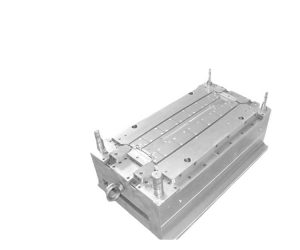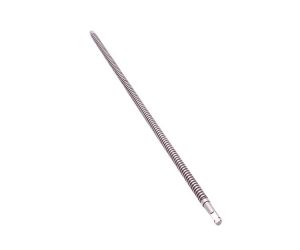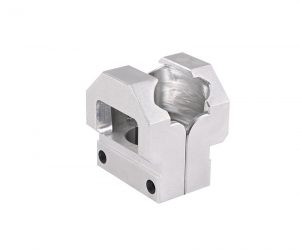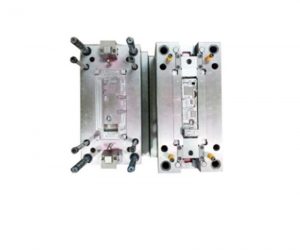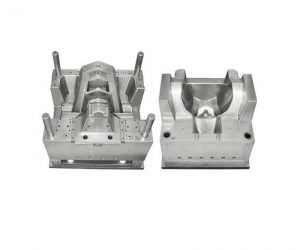The seemingly straightforward process of injection molding, while ubiquitous in plastics manufacturing, conceals a nuanced interplay of thermodynamic and rheological forces profoundly impacted by injection pressure. This pressure, far from a simple metric, acts as a critical control parameter dictating the ultimate fidelity and performance characteristics of the molded component. Its optimization transcends mere empirical adjustment; it demands a sophisticated understanding of polymer science, mold design, and process engineering.
Injection molding pressure, defined as the force per unit area exerted on the molten polymer as it fills the mold cavity, isn't merely a matter of sufficient force to overcome viscous resistance. It's a dynamic variable, fluctuating throughout the injection cycle, influencing everything from molecular orientation and entanglement within the solidified plastic to the susceptibility of the part to warping, sink marks, or internal voids. Insufficient pressure leads to the well-known defects of short shots and underfills, compromising dimensional accuracy and potentially jeopardizing structural integrity. Conversely, excessive pressure introduces the risk of exceeding the yield strength of the polymer, resulting in shear-induced degradation, molecular breakdown, and potentially catastrophic part failure manifested as cracking or warpage.
Optimizing injection molding pressure, therefore, requires a multi-faceted approach extending beyond simple trial-and-error. Material selection is paramount. The rheological properties of the polymer – its melt viscosity, melt flow index, and pressure-dependent shear thinning behavior – dictate the pressure profile required for complete mold filling without inducing defects. Furthermore, the thermal properties, including the glass transition temperature and crystallization kinetics, determine the optimal cooling strategy to mitigate residual stresses and warping.
Beyond material selection, precise control of injection speed is crucial. Rapid injection can generate high pressures, potentially exceeding the material's limits, while excessively slow injection may lead to premature cooling and incomplete mold filling. The interplay between injection speed and pressure necessitates a sophisticated understanding of the polymer's viscoelastic response under shear. Moreover, the mold temperature profile itself profoundly influences the pressure required for efficient filling, as does the mold design, particularly the presence of complex geometries or thin sections that demand higher pressures to penetrate.
Finally, the cooling phase, often overlooked, plays a significant role in determining the final part quality. Insufficient cooling can lead to residual stresses, warping, and dimensional instability, while overly rapid cooling can induce internal stresses and cracking. The optimization of cooling time and temperature requires careful consideration of the polymer's thermal conductivity and specific heat capacity, as well as the mold's thermal properties and geometry. In essence, mastering injection molding pressure requires a holistic understanding of the entire process, extending beyond individual parameters to encompass the intricate interplay of material science, process engineering, and mold design.
What is Injection Molding Pressure?
when we talk about injection molding pressure, it's basically the force that pushes the melted plastic into the mold. We measure this in either pounds per square inch (psi) or megapascals (MPa). This pressure has two main stages: the first is called injection pressure and the second is holding pressure.
Injection pressure is what you get right at the start, when the mold is being filled up with hot, gooey plastic. It's like how fast and how much of that plastic gets squeezed in. What affects this pressure? Well, things like how thick or thin the plastic is, the shape and size of the mold, and how quickly we're pushing the plastic in all play a part.
Then there's holding pressure. This comes after the mold is full of plastic. Its job is to keep a steady pressure on the plastic as it cools down and hardens, so it doesn't shrink or bend out of shape. The cooling speed of the plastic, how much it shrinks as it cools, and the thickness of the final product all have an impact on how much holding pressure is needed.
Why is Injection Molding Pressure Important?
Injection molding pressure is important because it affects the quality and performance of injection molded parts. Some of the benefits of optimizing injection molding pressure are:
- Improves part accuracy and dimensional stability by reducing shrinkage and warping.
- Enhances part appearance and surface finish by eliminating defects such as short shots, flash, sink marks, and weld lines.
- Increases part strength and durability by improving molecular orientation and reducing internal stresses.
- Reduces part weight and material waste by minimizing excess plastic in the mold cavity.
- Increases production efficiency and reduces cycle time by optimizing injection speed and cooling time.
How to Optimize Injection Molding Pressure for Different Types of Plastic Parts
There is no one-size-fits-all solution for optimizing injection molding pressure. The optimal injection molding pressure depends on various factors, such as the type of plastic material, the design of the part, and the specifications of the mold. However, some general guidelines can be followed for different types of plastic parts:
Thin-Walled Parts
Thin-walled parts are parts that have a wall thickness less than 1 mm. They require high injection pressure and high injection speed to fill the mold cavity quickly and completely. High injection pressure also helps to reduce shrinkage and warping in thin-walled parts. However, too high injection pressure can cause flash or overpacking in thin-walled parts. Therefore, it is important to balance injection pressure with holding pressure to achieve a uniform part thickness and avoid defects.
Thick-Walled Parts
Thick-walled parts are parts that have a wall thickness greater than 3 mm. They require low injection pressure and low injection speed to avoid excessive shear stress and heat generation in the molten plastic. Low injection pressure also helps to reduce internal stresses and molecular orientation in thick-walled parts. However, too low injection pressure can cause short shots or incomplete filling in thick-walled parts. Therefore, it is important to balance injection pressure with holding pressure to achieve a complete filling and avoid defects.
Complex Parts
Complex parts are parts that have intricate shapes or features, such as ribs, bosses, holes, or undercuts. They require moderate injection pressure and moderate injection speed to fill the mold cavity evenly and accurately. Moderate injection pressure also helps to reduce defects such as weld lines or air traps in complex parts. However, too high or too low injection pressure can cause distortion or deformation in complex parts. Therefore, it is important to adjust injection pressure according to the geometry and size of each feature in complex parts.
High-Strength Parts
High-strength parts are parts that require high mechanical properties, such as tensile strength, impact resistance, or fatigue resistance. They require high holding pressure and long holding time to ensure a high degree of molecular orientation and crystallization in the plastic. High holding pressure also helps to reduce shrinkage and warping in high-strength parts. However, too high holding pressure can cause overpacking or stress cracking in high-strength parts. Therefore, it is important to balance holding pressure with cooling time to achieve a high strength and avoid defects.
Conclusion
the pressure used in injection molding is super important for making sure your parts come out great. By tweaking this pressure based on what kind of plastic part you're making, you can really improve how accurate, good-looking, strong, and efficient those parts are.
To get it right, think about things like the type of plastic you're using, how the part is designed, and the mold specifications. And don't forget to keep an eye on both the injection pressure and the holding pressure during the whole process. That way, you'll get the best possible results for your parts.
